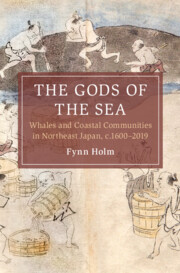Bibliography
Published online by Cambridge University Press: 10 August 2023
Summary
- Type
- Chapter
- Information
- The Gods of the SeaWhales and Coastal Communities in Northeast Japan, c.1600-2019, pp. 192 - 212Publisher: Cambridge University PressPrint publication year: 2023
- Creative Commons
- This content is Open Access and distributed under the terms of the Creative Commons Attribution licence CC-BY-NC 4.0 https://creativecommons.org/cclicenses/



